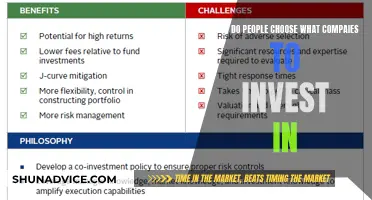
There are several options for where to invest your retirement savings, each with their own advantages and disadvantages. These include defined contribution plans, such as 401(k)s, 403(b)s, and 457(b)s, which are the most common type of workplace retirement plan and offer tax advantages and employer matching contributions; traditional pensions, which are funded by employers and provide a fixed monthly benefit but are becoming less common; and individual retirement accounts (IRAs), which offer more control over investment choices but have lower annual contribution limits. Other options include guaranteed income annuities (GIAs), the Federal Thrift Savings Plan, and cash-value life insurance plans. The best option depends on individual circumstances, such as age, income, and employment status.
| Characteristics | Values |
|---|---|
| Types of Retirement Plans | Defined contribution plans, traditional pensions, guaranteed income annuities, cash-value life insurance plans, nonqualified deferred compensation plans, individual retirement accounts, the Federal Thrift Savings Plan, cash-balance plans |
| Defined Contribution Plans | 401(k)s, 403(b)s, 457(b)s, Roth 401(k)s, Roth 403(b)s |
| Individual Retirement Accounts | Traditional IRAs, Roth IRAs, spousal IRAs, rollover IRAs, SEP IRAs, SIMPLE IRAs |
| Retirement Plans for Small-Business Owners and Self-Employed People | SEP IRAs, solo 401(k)s, SIMPLE IRAs, profit-sharing plans |
What You'll Learn

Defined contribution plans
In a defined contribution plan, the employee decides how much they want to contribute to their individual account, and these contributions are deducted from their paycheck and added to their account automatically. The employee will ultimately receive the balance in their account, which is based on contributions plus or minus investment gains or losses. The value of the account will fluctuate due to changes in the value of the investments.
One of the most common defined contribution plans is the 401(k) plan, which is available to employees of publicly-owned companies. In 2024, the maximum amount an employee under 50 can contribute to a 401(k) plan is $23,000 per year, with a "catch-up" contribution of up to an additional $7,500 for those aged 50 or older. With a traditional 401(k), an employee contributes pre-tax wages, meaning contributions are not considered taxable income. The 401(k) plan allows these contributions to grow tax-free until they are withdrawn at retirement, at which point distributions create a taxable gain.
A similar plan is the 403(b) plan, which is offered to employees of public schools, charities, some churches, and certain tax-exempt organizations. Like the 401(k), the 403(b) plan allows employees to contribute pre-tax money, which can grow tax-free until retirement. At retirement, withdrawals are treated as ordinary income, and distributions before age 59 ½ may create additional taxes and penalties.
Another type of defined contribution plan is the 457 plan, which is available to employees of certain types of nonprofit businesses, as well as state and municipal employees. The Thrift Savings Plan (TSP) is a similar plan offered to federal government employees, providing several low-cost investment options.
Savings Strategies: Where to Invest Right Now
You may want to see also

Traditional pensions
In the United States, traditional pension plans have become increasingly rare and are being replaced by defined-contribution plans, such as the 401(k) retirement savings plan, which are less costly for employers. In 2019, only 14% of Fortune 500 companies offered pension plans to new workers, down from 59% in 1998.
One of the main advantages of traditional pensions is that they address longevity risk, or the risk of running out of money before death. They also require minimal effort from employees as the employer is responsible for funding and managing the pension plan.
However, traditional pensions have some drawbacks. Firstly, they are becoming less common as employers are no longer willing to bear the expense of funding them. Secondly, the benefit received by employees is dependent on the company's continued existence and financial health. If a company faces bankruptcy or financial difficulties, pension benefits may be reduced.
Despite these risks, traditional pensions are still considered valuable and employees may need to weigh the pros and cons before deciding to leave a company that offers a pension plan.
The Great Debate: Invest in Your House or Pay Off Debt?
You may want to see also

Guaranteed income annuities
Deferred income annuities are a more popular option as they allow you to make premium payments over time. For example, you can start making payments at age 50 until you reach retirement at 65. Each payment you make increases your lifetime income. You can purchase deferred income annuities with after-tax money, in which case you will only be taxed on the plan's earnings. Or you can buy it within an IRA, which gives you an upfront tax deduction, but the entire annuity will be taxable when you make withdrawals.
Income annuities provide a guaranteed stream of income for life or a set period. They are not subject to stock market performance, so you are protected against the risk of outliving your savings. The amount you receive each month is guaranteed and will not be affected by financial market volatility.
Annuities are complex legal contracts, and it can be challenging to understand your rights and benefits. It is important to be fully informed about what an annuity will and will not do for you. While they provide bond-like returns, you lose the potential for higher returns in the stock market. However, if you live longer, you will receive more payments and a better overall return.
Smart Places to Invest $1 Million
You may want to see also

Tax-advantaged retirement accounts
Traditional Accounts
With a traditional account, you can deduct your contributions from your taxable income in the year you make them. You then pay taxes on the disbursements you receive in retirement. The money in these accounts has not yet been taxed, so there are strict rules on how you can use it. There are steep penalties for withdrawing money early. You must take Required Minimum Distributions starting at age 70 1/2.
Roth Accounts
With a Roth account, you pay tax on your contributions in the year that you make them. Your disbursements in retirement are tax-free. The money in a Roth account has already been taxed, so the rules on how you use it are generally less strict. There are no Required Minimum Distributions, so you can reserve funds for late in retirement. However, there are income limits for eligibility, and penalty-free withdrawals may tempt you to spend your retirement funds early.
K) Plans
A 401(k) is a tax-advantaged retirement account offered by your employer. Some employers will match a portion of your 401(k) salary deductions, and you only pay taxes on your contributions and earnings when you retire and withdraw the funds. There are penalties for withdrawing money early. Required Minimum Distributions start at age 70 1/2.
Solo 401(k)
A solo 401(k) is ideal for self-employed workers who earn a high income and want to maximise tax-advantaged savings. Like a regular 401(k), the account allows deferral of up to a certain amount of pre-tax income. The account also permits pretax profit-sharing contributions from their business entity, up to a certain percentage of compensation.
Self-Directed IRA
A self-directed IRA allows you to invest in more diversified portfolios. You will have more control over your investments, which can mean more profits, but it also comes with more risk. Self-directed IRAs offer a huge variety of investment instruments, including stocks, bonds, mutual funds, real estate, precious metals, or even digital assets like cryptocurrency.
Investing in People: Definition and Impact
You may want to see also

Investment risk
There are several types of investment risk, including:
- Market risk: The risk of losing investments due to factors that affect the overall performance of the market, such as political and macroeconomic risks.
- Interest rate risk: The risk that an investment's value will change due to fluctuations in interest rates.
- Inflation risk: The risk that inflation will reduce the purchasing power of investors receiving a fixed rate of interest.
- Credit or default risk: The risk that a borrower will be unable to pay the contractual interest or principal on its debt obligations, which is particularly relevant for investors holding corporate bonds.
- Country risk: The risk that a country will not be able to honour its financial commitments, negatively impacting the performance of financial instruments issued within that country.
- Foreign-exchange risk: The risk that changes in currency exchange rates will affect the price of an asset.
- Reinvestment risk: The possibility that an investor will not be able to reinvest cash flows received from an investment at the same rate of return as the original investment.
- Political risk: The risk that an investment's returns will suffer due to political instability or changes in a country.
- Counterparty risk: The likelihood that one of the parties involved in a transaction might default on its contractual obligation.
- Liquidity risk: The risk associated with an investor's ability to convert their investment into cash.
It's important to note that investment risk can be mitigated through diversification and hedging strategies. Diversification involves spreading your investments across different types of securities, industries, sectors, and regions to reduce exposure to specific risks.
When considering where to invest your retirement savings, it's crucial to assess the level of risk you are comfortable with, also known as your risk tolerance. This takes into account your past experiences, current financial status, and future goals. As you approach retirement, you may want to adjust your investment mix to include more stable options, such as bonds, and reduce your exposure to riskier investments like stocks.
Gov't Spending: Young vs. Old
You may want to see also







